“I’ll just take the rubbish over to the bins”, I say. “Hans & Gisela are not due for another 15 minutes, so I should be back before they arrive.”
We are at Svinninge Marina, just north of Stockholm. We are waiting for our German friends, Hans & Gisela, who are joining us for a few days’ sailing. They have been holidaying in the north of Sweden and are now making their way back to Denmark where they live.
“Have they arrived yet?”, I call out to the First Mate when I return. “I wouldn’t be surprised if they are a bit late. They had quite a long way to come.”
A head appears over the splash hood. It’s not the First Mate.
“Yes, we have arrived”, says Gisela, laughing. “And we weren’t late. If anything we are a bit early!”

It’s nice to see them again. We unload their luggage and give them a quick tour of the boat. The operation of the toilet always seems to be a thing of either concern or fascination for visitors, often both.
“I might get used to it by the end of the trip”, says Hans.
The sunny weather is too good to waste, so we decide to have lunch and set off straight away. Unfortunately, there is almost no wind and we need to motor.
On the way out, we pass an island full of dead and dying trees.
“You see quite a lot of islands like that”, says the First Mate. “We haven’t worked out yet why all the trees die.”

“It’s because of the cormorants nesting there”, says Gisela. “It’s the same in Denmark. Unfortunately their poop is very acidic and over a period of time it kills the tree they are in. If there are enough cormorants all the trees will eventually die. Then they move on and find another island. “
“So humans are not the only species that destroy their own environment with all the pollution they produce?”, I say.
“The only difference is that the cormorants have lots of islands to go to, but we only have one planet”, says Hans. “Once we have killed everything on it, we won’t have anywhere to go. Unless we have developed cheap space travel by then, I suppose.”
“Much better to look after the planet we have than go and look for others to destroy”, says the First Mate.
The wind picks up to a respectable 15 knots, and we sail along speedily on a beam reach. We follow the main fairway south until we branch off to the east to wend our way between a number of small archipelago islands.

We arrive at Grinda, a popular destination in the main season. Today there are only two other sailboats and a handful of small motorboats. We tie up on the outside of the pontoon. As we do, a police boat appears and moors in front of us.
“Are you on the run?”, I ask Hans.
“I thought that they had got wind of all those cans of beer under your floorboards”, he replies.
“They often come here to have their lunch and to fill their boat up with fuel”, the harbourmaster tells us later. “So no need to worry!”

In the evening, we walk up to the Grinda Wärdshus hotel for dinner. It is not too busy, and we find a table on the terrace outside. It turns out to be a good choice, as a half an hour later the sun begins to set. We sit spellbound as we watch the succession of yellows, oranges and reds give way to purples and darkening shades of blue. Then the sun is gone.

“It’s stunning”, says Gisela. “The way the sun lights up the sea and silhouettes all the islands. I can see what you mean when you say that the Archipelago is so beautiful.”
The conversation turns to politics in Germany.
“What is worrying is the rise in popularity of the Alternative für Deutschland party”, says Hans. “The AfD. A few years ago we would have been horrified to hear that a far-right party had won a local council election, given our history. But that’s what happened in June in Thuringia. They now have an AfD mayor in one of the towns.”
“It seems to be particularly in the former GDR”, says Gisela. “They feel disadvantaged there after reunification compared to the former West Germany. They are also used to strong authoritarian leaders there rather than democratically elected ones.”
“AfD are also playing on reactions to Germany’s Kollektivschuld, or collective guilt”, says Hans. “For things that happened in WW2. We had it rammed into us at school about the atrocities that were committed by Germany and how it must never happen again. But people are now starting to say that that was something that their parents or grandparents did, and why should they feel any guilt for it?”

“There does seem to be a rise in the far-right throughout Europe”, I say. “Not just Germany. Last year the Sweden Democrats with neo-Nazi origins joined the coalition government here in Sweden, something similar happened in Finland, then there is Austria, Italy and Hungary. The ruling party is Poland is pretty right wing, not to mention the Tories in the UK.”
“The Tories are predicted to lose the next elections in the UK”, chips in the First Mate. “So that might be a swing in the other direction.”
It starts raining heavily in the early morning. I lie for a few minutes listening to the noise of the raindrops on the hatchway overhead. It sounds like it is more than a shower and is setting in. I snuggle back under the duvet and drift off to sleep again.
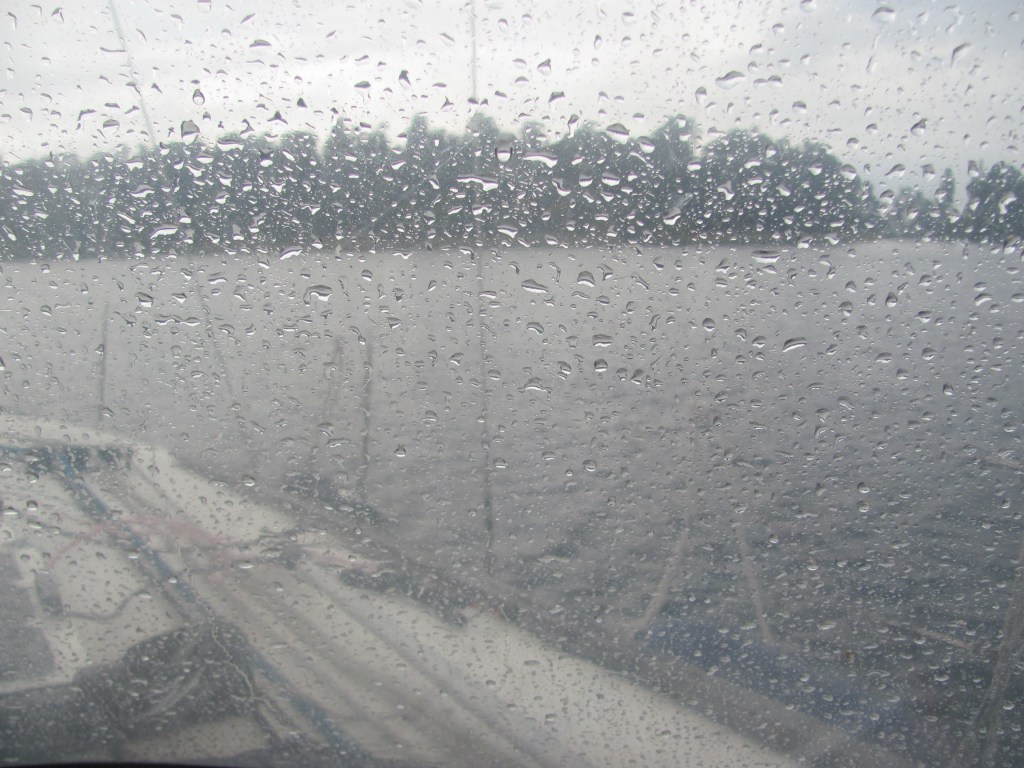
In the afternoon, the rain stops and the sun comes out. We cast off and sail eastwards to the island of Svartsö, the Black Island. The small harbour is almost empty, so we moor alongside to one of the pontoons. Just after we are settled and drinking our tea, another sailboat arrives. It ties up to the neighbouring pontoon. After a few minutes, the skipper knocks on our window.
“Could I ask you to move a bit further forward?”, he asks, in the tone of someone who is used to getting his way. “It’s a bit too exposed on the next pontoon. We’d like to go where you are.”
“Sure”, says the First Mate. “Do you mind if we just finish our tea first? Then we are happy to move.”
“I would rather you moved it now”, he says, an edge to his voice. “We have a party to go to on the other side of the island, and we are late already.”
We reluctantly leave our cups of tea to untie our ropes and pull Ruby Tuesday forwards.
“I don’t mind moving”, says the First Mate later. “But it was his attitude that annoyed me. He could have just waited until we had finished our tea. Now it’s all cold. What was wrong with the place that he was at, anyway? It’s no more or less exposed to the wind than where we are.”
“My guess is that he is a lawyer”, I say. “He had that look about him, and they are used to getting what they want.”
“I was thinking that he is a hospital administrator”, says Hans. “They can be pretty bossy too.”

We finish our lukewarm teas and decide to explore the island. Near the harbour is a small grocery store, with a map of the island attached to its wall.

“These two lakes in the middle look interesting”, says Gisela. “Let’s walk up to there. By the time we get back it’ll be time to start dinner.”
We follow the road through the woods, passing by some farmland. Cows graze in the fields. We take a small path to the left of the main track and find ourselves at the edge of a lake.

“Look, you can get a good view of it from this rock”, shouts Gisela.
There’s a splash. She has fallen in. She struggles to regain her footing, but falls in again, this time up to her neck. We rush over to help her out.
“Don’t come onto the rock”, she shouts. “It’s really slippery.”

She manages to climb out, but she is soaked. We head back to the boat. The First Mate has some warm clothes she changes into while we try to dry the others.
“Well, that’s a lesson to check rocks first and make sure they are not too slippery”, says Gisela. “I feel so silly.”
Luckily her clothes are dry by the morning. Over breakfast, we decide to go for a walk through the forest on the north side of the island.
“We might find some mushrooms”, says Hans. “One of our hobbies is mushroom collecting. Forests are good places for them.”

Sure enough, there are mushrooms in abundance.
“Look, these are chanterelles”, says Hans. “You can tell them by their shape and colour. They are edible and actually quite tasty. They grow throughout Europe and Asia in woods like this, so we should see quite a few more.”
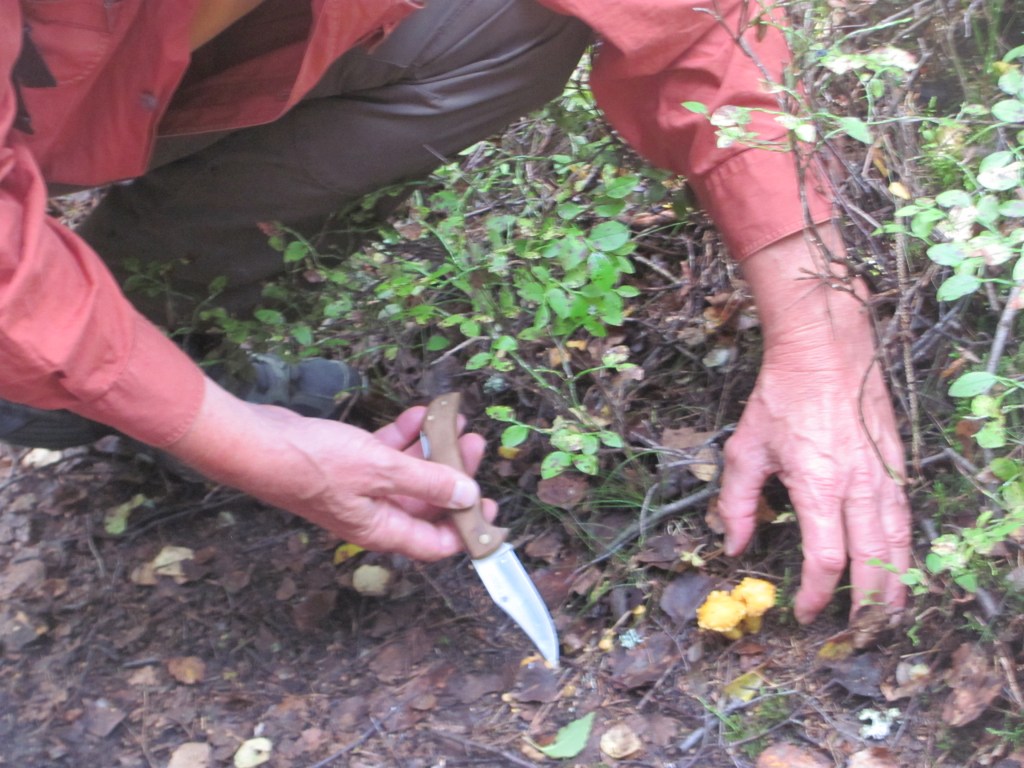
Sure enough there are lots by the side of the track, and before long we have a bag full. Even I am learning to recognise them.

“Here’s a fly agaric”, calls Gisela. “Amanita muscaria. The typical mushroom associated with pixies and fairies. They are poisonous, but you can eat them – very few people die from them. Normally they make you feel a bit nauseous, but in severe cases you can become delirious. But most people recover in 24 hours or so, perhaps with a nasty headache. A lot of cultures eat them for their hallucinogenic properties. The shamans in Siberia, for example, used them to enter into a trance.”
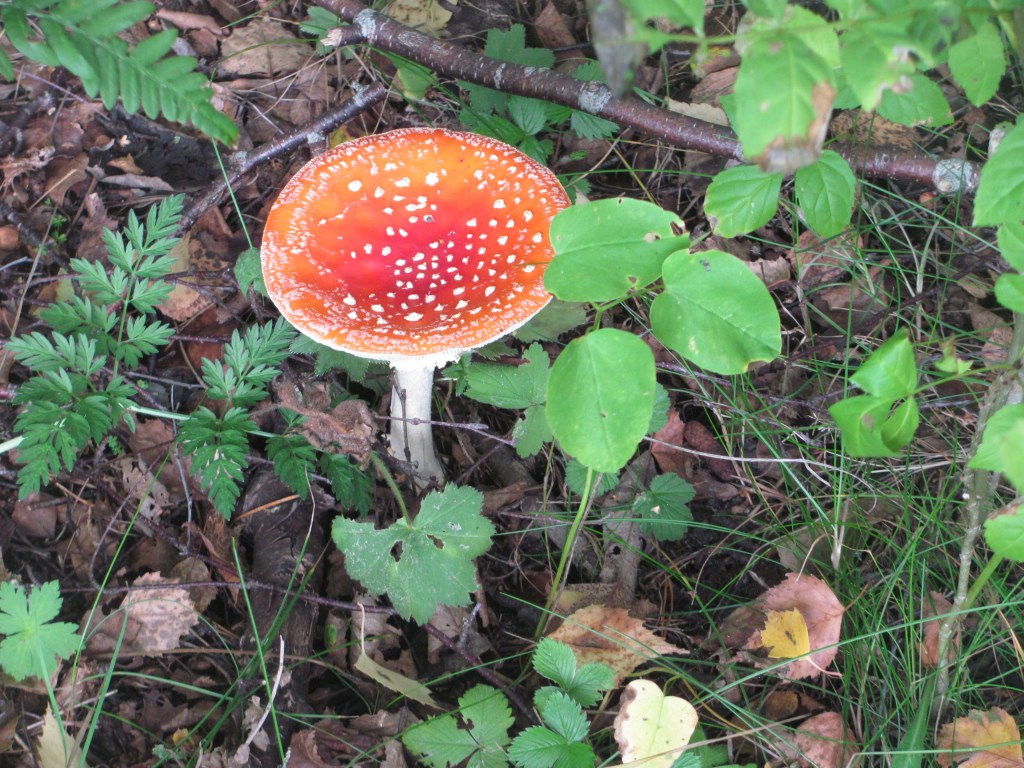
“The Vikings were also supposed to eat them before they went into battle”, says Hans. “It made them into berserkers, crazed with extra strength and rage, and oblivious to danger. So much so they often fought without armour. Although a recent theory suggests that it was more likely to be henbane that caused this state.”
Nevertheless, I decide to give fly agaric a miss. I am not really in the mood to do battle at the moment.
“The other ones to watch out for are Death Cap, or Amanita phalloides”, says Hans. “Same genus, different species. I haven’t seen any here yet. But they are supposed to be the most toxic mushroom in existance. Just half of one is enough to kill you.”
“You are starting to put me off mushrooms”, I say.
We leave the forest, and come to small settlement. Near the centre is a restaurant. A tractor is parked near the bar. A motorbike is parked on top of it. Goats roam between the outside tables. It’s all very rustic.

“It’s called Bistro Sågen”, says Gisela. “It means Saw Bistro. It seems as though it was an old sawmill.”
We decide to have some lunch there. The goats eye us up.

At the table next to us are some leather-clad bikers engaged in an intense discussion on some arcane parts of their bikes. At least that is what I assume it to be.
“They must have bought their bikes over on the ferry”, says the First Mate. “I hope they don’t disturb our lunch with their loud talk.”
We scan the menu. I breathe a sigh of relief; there are no mushroom dishes.
“I can recommend the Toast Skågen”, says the waiter. “It’s a very Swedish with hand-shelled prawns mixed with mayonnaise, some sour cream, grated horseradish and a dash of tabasco, topped with caviar, a sprig of dill and a lemon, all served on a large square of sourdough toast. It was created just after the WW2 by a Tore Wretman who owned a restaurant in Gothenburg overlooking the Öresund, and named his creation after the village in Denmark on the opposite side. Now it’s popular all over Sweden. It’s very tasty.”
The goats look at us wistfully, nodding in agreement.

Four plates of Toast Skågen arrive. One of the bikers gives us a thumbs up sign.
“Toast Skågen”, he says. And hearing us speaking in English and German, “Gut, sehr gut. Sehr lecker! Very tasty!”
And it is sehr lecker. So much so, I feel I could almost eat another one. The goats look on expectantly.
On the way back, we see what looks like a snake on the road.

“Ah, that’s a slow worm”, says Gisela. “It’s actually a legless lizard, but a lot of people think they are snakes. They certainly look like them.”
We set off in the morning to sail back in the general direction of Svinninge, but take the long way round to see more of the Archipelago. Eventually we join the main shipping fairway back to Stockholm. Unfortunately the wind is more or less on our nose and we need to make a series of tacks.
“Can I have a go?”, asks Gisela. “I’d like to feel how a large boat handles.”
She is a keen sailor herself and has a small sailboat back home in Denmark. She takes the helm.
“Wow, it feels so much less responsive than our boat”, she says after a few minutes. “More stable in a way. Ours is all over the place with the slightest twitch of the tiller or breath of wind.”
We tack our way up the fairway and eventually arrive back at Storön, our favourite anchorage.
“That was fun”, says Gisela. “I enjoyed that!”
“I wonder if the mystery boat that we saw last week will still be here?”, says the First Mate.
It is. In the same place as we had left it about a week ago. It looks to have been untouched since then. Still no-one appears to be on it. No-one alive, at least.

“We think that someone might have been murdered and has been left inside it”, we explain to Hans and Gisela as we bring out the beers. “It’s odd to leave a boat unattended tied up to rocks with only a stern anchor. Especially for more than a week. There’s a risk that the bow might be smashed against the rocks if a storm came.”
“Hmmm, very mysterious”, says Hans, warming to the theme. “Perhaps it belongs to a secret service agent who was on to corruption in the Swedish government and who had to be silenced to protect the guilty parties?”
“Or a sailor who overheard some suspicious foreigners planning to lay charges to destroy a gas pipeline under the Baltic?”, I say. “Perhaps he was just about to alert the authorities in Stockholm when the plotters realised they were being overheard and had to do something.”
“Or someone who has just left their boat here during the week while they are at work?”, says the First Mate. “They are probably coming back for it at the weekend.”
“But how would they get there and back?”, says Gisela. “It’s a long way to row in a small dinghy.”
“And there are no paths away from this bay that they could walk on”, I say. “The boat has been there for more than a week now. I think that there is definitely something suspicious going on. I wonder if we will ever find out?”
“Unlikely”, says the First Mate. “We won’t be back here again until next year. It’ll either have sunk or been moved by then. Come on. Let’s have dinner. It’s spaghetti bolognese tonight.”
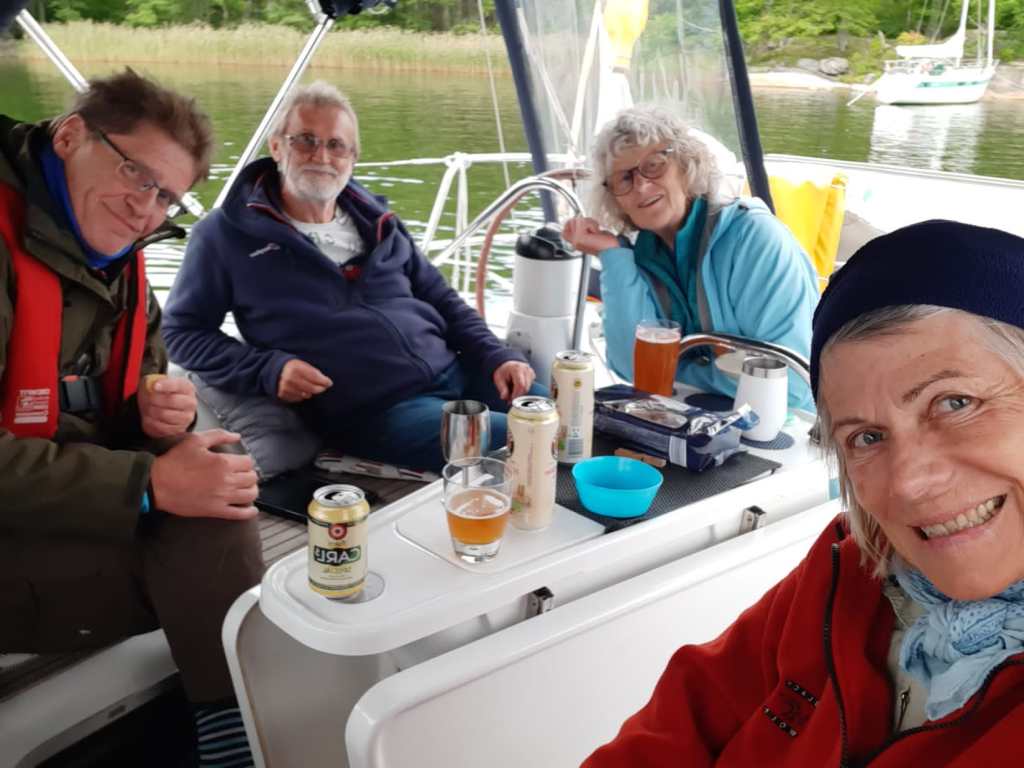
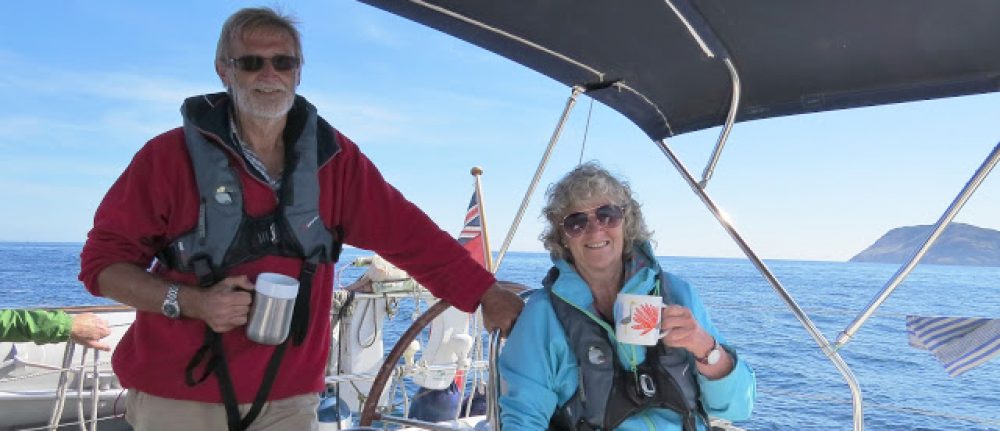
Let us know if you ever find the answer to the mystery boat ha ha!
LikeLike
Will do!
LikeLike